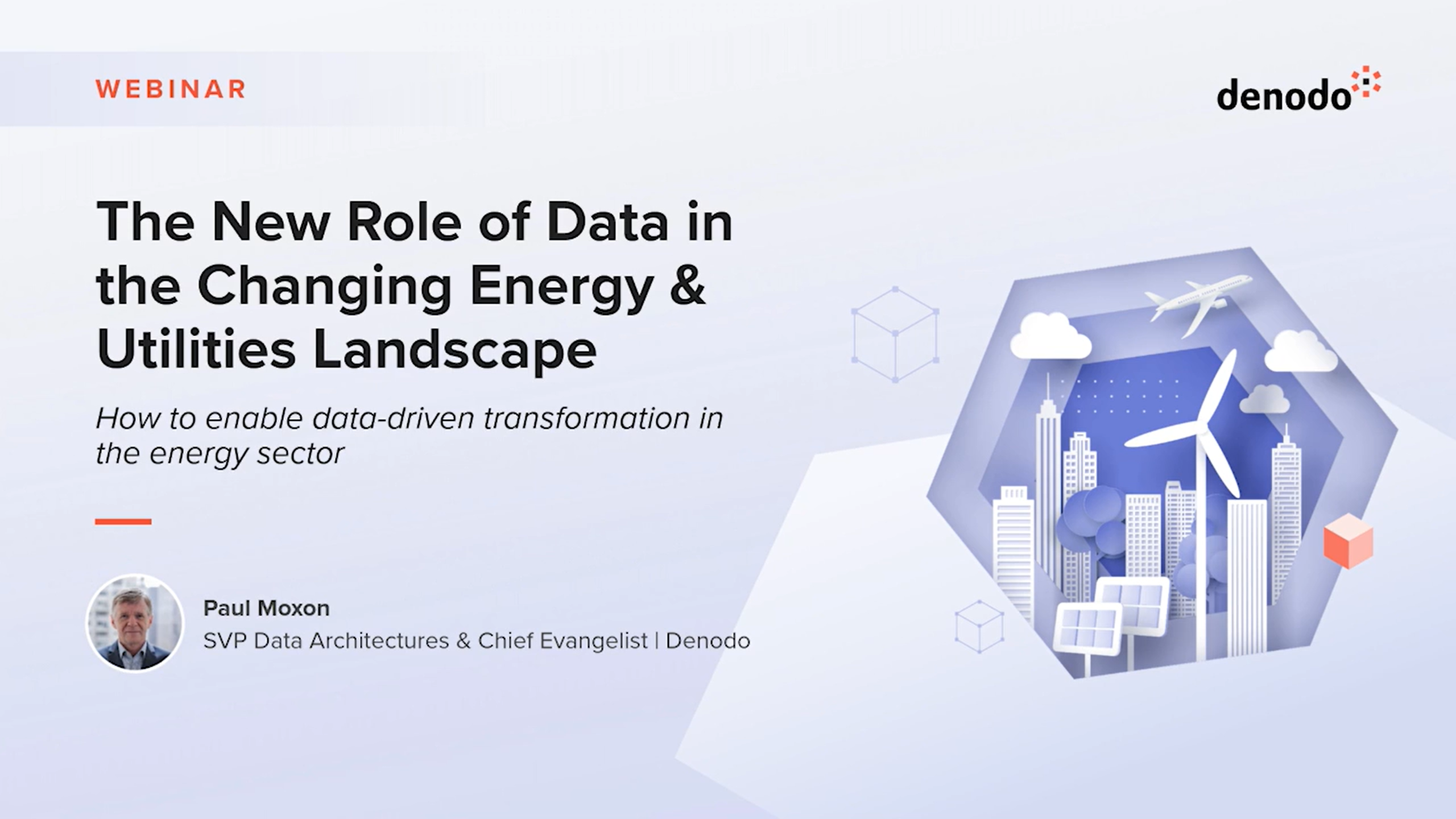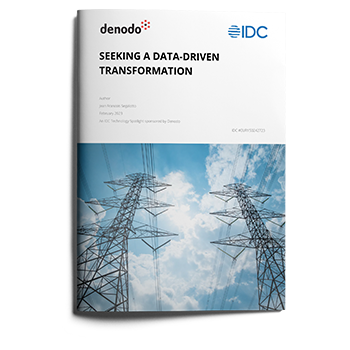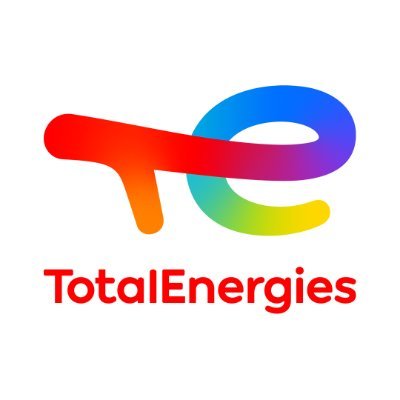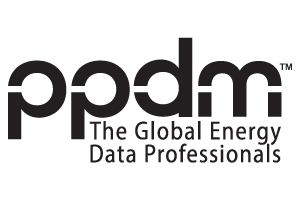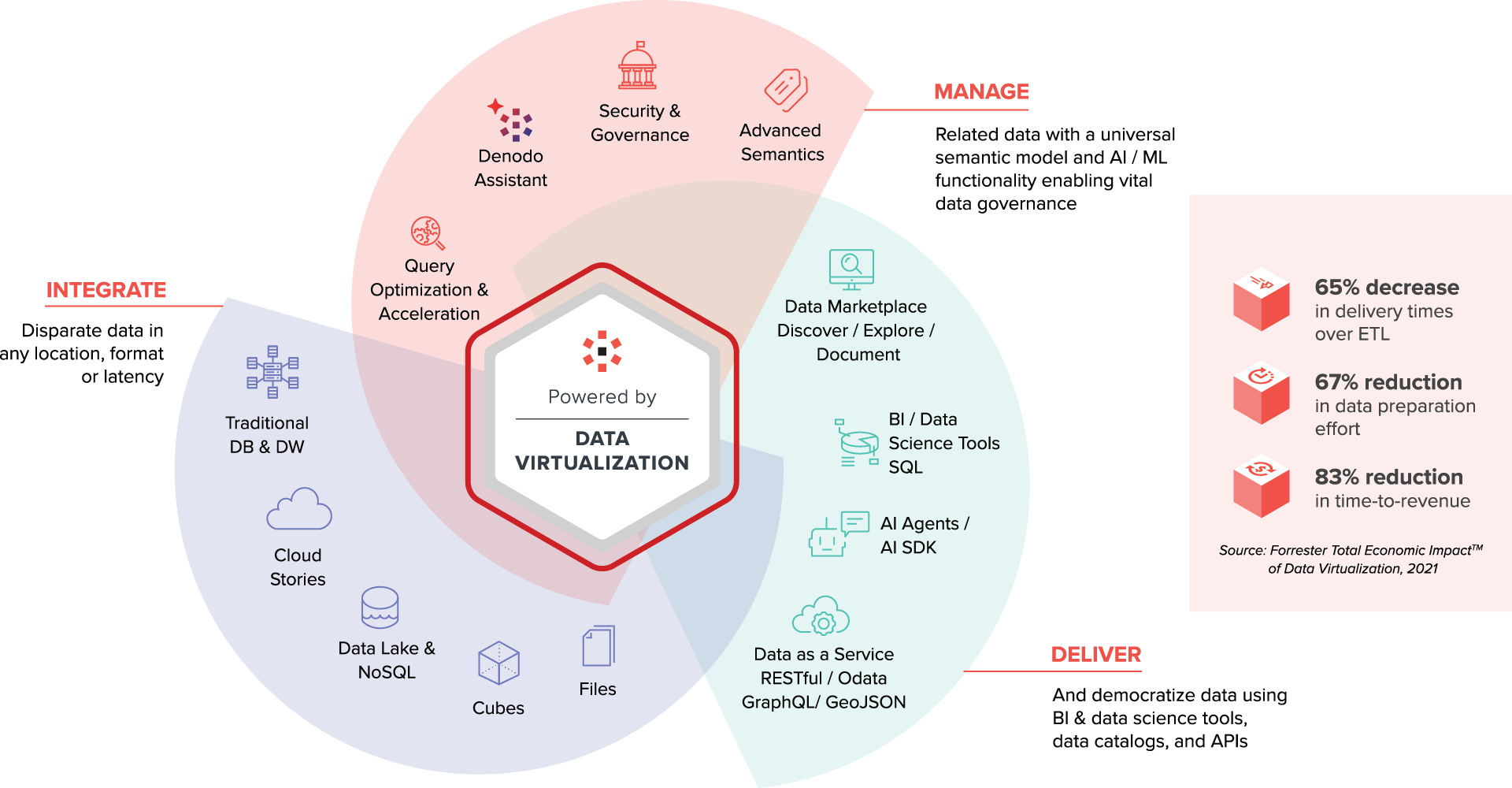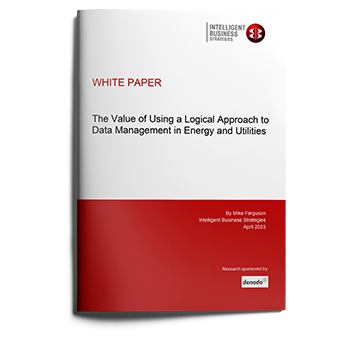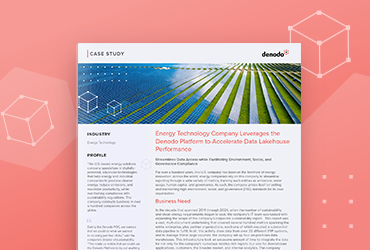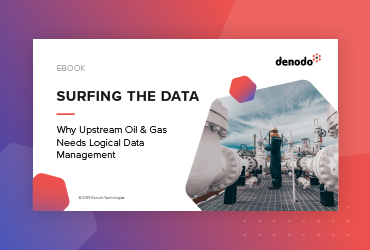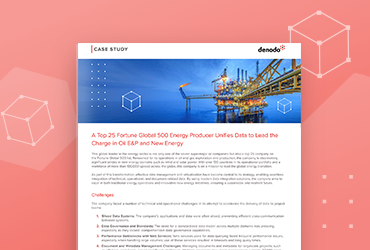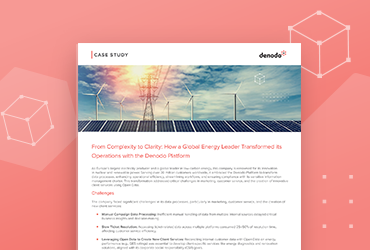Harnessing distributed energy sources and providing innovative customer engagement and support is key. Data driven AI analytics will lie at the heart of this, and with the real-time growth in volume spread over a wide geography and accessing different types of complex data, the only way to achieve this in short time and on an on-going secure and governed manner, is through Logical Data Management. Denodo is the long established clear market leader in this space. Learn how we can help you with innovation and customer engagement.
At the heart of the energy company’s challenges is data. Data, to better manage and optimize the generating resources, to better inform consumers about their energy consumption, to deliver better services and new product offerings to those consumers.
Watch this webinar and learn how energy companies can better leverage their existing strategic data assets.


